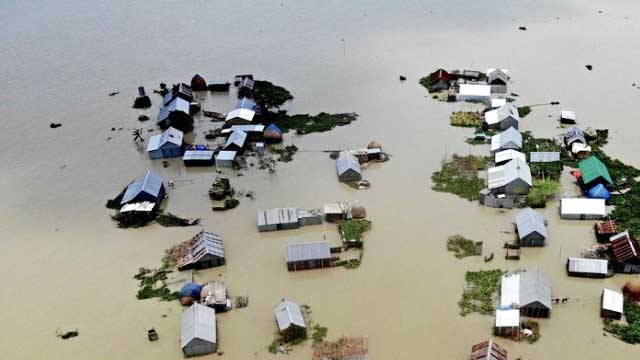Young people living in Bangladesh are among the most at risk of the impacts of climate change, threatening their health, education, and protection, said a Unicef report.
Bangladesh ranked second among South Asian countries and 15th globally in Unicef’s index titled “The Climate Crisis Is a Child Rights Crisis: Introducing the Children’s Climate Risk Index”.
The index ranks countries based on children’s exposure to climate and environmental shocks, such as cyclones and heatwaves, as well as their vulnerability to those shocks based on their access to essential services, a Unicef press release said on Friday.
Pakistan, Bangladesh, Afghanistan, and India are among four South Asian countries where children are at extremely high risk of the impacts of the climate crisis, with global rankings of 14, 15, 15, and 26, respectively.
Nepal is ranked 51, Sri Lanka 61, and Bhutan 111, with children at relatively lower risk.
Approximately one billion children live in the 33 countries classified as “extremely high-risk,” including the four South Asian countries.
“For the first time, we have clear evidence of the impact of climate change on millions of children in South Asia. Droughts, floods, air pollution and river erosion across the region have left millions of children homeless and hungry, and without any healthcare and water,” said George Laryea-Adjei, Unicef regional director for South Asia.
“Together, climate change and the Covid-19 pandemic have created an alarming crisis for South Asian children.
The time to act is now - if we invest in water, healthcare and education, we can protect their futures from the impacts of a changing climate and degrading environment,” the Unicef director said.
South Asia is home to over 600 million children and has the highest number of young people globally.
The report also reveals a disconnection between where greenhouse gas emissions are generated, and where children are enduring the most significant climate-driven impacts.
The 33 extremely high-risk countries, including four from South Asia, collectively emit just 9% of global CO2 emissions. Conversely, the 10 highest emitting countries collectively account for nearly 70% of global emissions.
“The frightening environmental changes we are seeing across the planet are being driven by a few but experienced by many in South Asia,” added Laryea-Adjei.
“We must urgently reduce greenhouse gas emissions and work together as a community to build greater resilience in South Asia. Children and young people are at the heart of this change, with almost half of 1.8 billion people below the age of 24 in South Asia.”
Young people across South Asia are championing the cause.
In Bangladesh, exposure to cyclones, droughts, floods and river erosion moved Tahsin, 23, to action. Through the youth organization he established, Tahsin and 400 children and young people from across the country are cleaning up public spaces, selling the plastic they collect to recycling centres, and planting trees.
In Pakistan, 14-year-old Zymal started producing biodegradable bags in order to clean up her country from plastic pollution. In India, a youth filmmaker Divy is traveling across the country and spreading awareness about global warming, and Gavita developed a water budgeting app.
In light of these findings, Unicef is urgently calling on governments, businesses and relevant actors to increase investment in climate adaptation and resilience in key services for children and reduce greenhouse gas emissions. Countries must cut their emissions by at least 45% (compared to 2010 levels) by 2030 to keep warming to no more than 1.5°C.
It stressed providing children with climate education and greens skills, critical for their adaptation to and preparation for the effects of climate change and including young people in all national, regional and international climate negotiations and decisions, including at COP26.
The report suggested ensuring the recovery from the Covid-19 pandemic is green, low-carbon, and inclusive, so that the capacity of future generations to respond to the climate crisis are not compromised.





